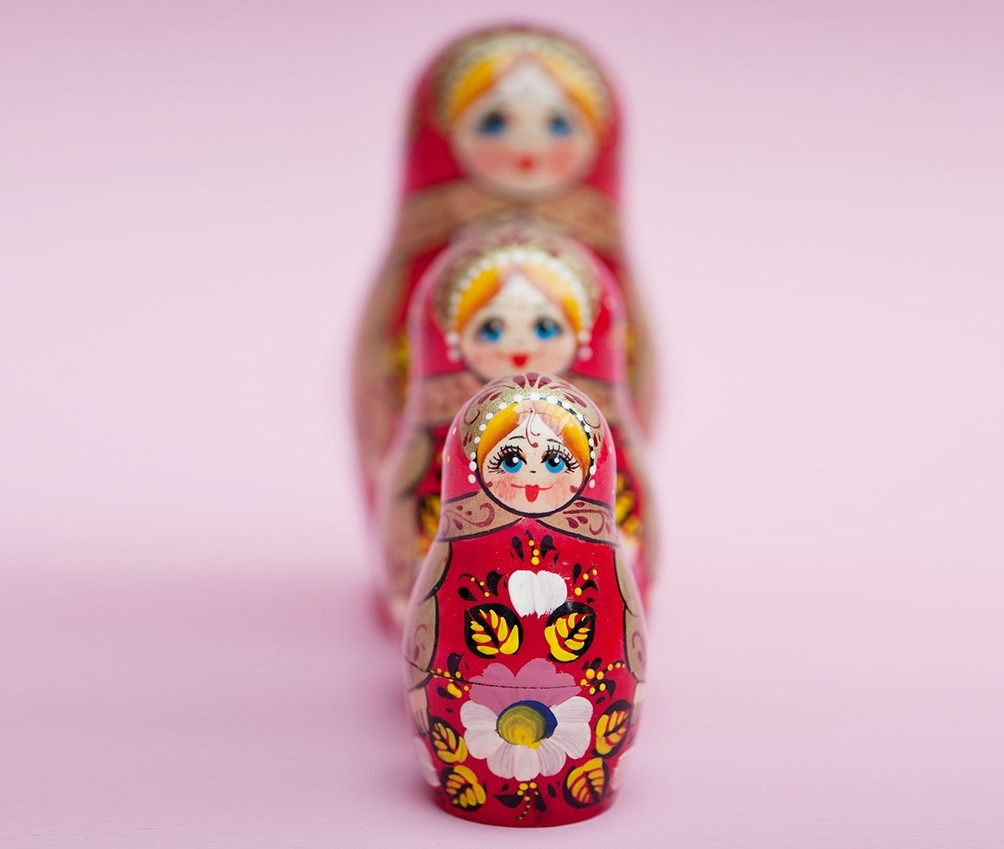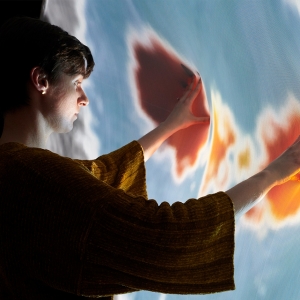
To some viewers, Netflix’s hit series Russian Doll is a sexier, edgier, video-gamer update of the 1993 movie Groundhog Day. But for a practicing Buddhist, this new show offers a particularly rich trove of allusions to Buddhist ideas. In truth, for Buddhists, such ideas are everywhere and in everything, but I found Russian Doll particularly good spiritual fun.
The show begins (in this case, repeatedly) on our main character’s 36th birthday, a time when the first existentially angsty hints of a mid-life crisis may start to ripen into full bloom. As played by Natasha Lyonne, Nadia faces the issue of death head-on (often actually landing on her head) by repeatedly dying and coming back to life, only to relive her birthday over and over…maybe until she finally gets it right?
Spoiler alert: if you haven’t already done so, watch all 8 episodes now. As Buddha taught, there’s no time like the present.
The cycle of death and rebirth is just the show’s most obvious Buddhist theme. Russian Doll also plays with the Buddha’s teachings on interdependence and the wisdom teachings on emptiness: the ultimate nature of reality. Play is the key word here. This is a comedy, albeit often violent, sometimes bloody, and certainly dark.
In the playground of the East Village, Nadia and her male counterpart, Alan, eventually emerge having learned some powerful lessons tied to those Buddhist teachings.
The Cycle of Death, Rebirth, and Suffering
When Nadia looks in the bathroom mirror (or, in a few instances late in the series, at the absence of one) we can’t be sure if it’s the realization that she’s just died again or that she’s been given another chance at life that makes her say “Fuck.”
She’s grappling with two concepts central to Buddhism: reincarnation and the endless cycle of suffering known as samsara. The concept of reincarnation predates the birth of Buddha Shakyamuni in the 6th century BC, so the Buddha’s teachings assume an understanding that this life is just one of many along a timeless mental continuum. The first of his noble truths describes how our lives are characterized by suffering, or at the very least, by discomfort, a lack of abiding mental peace.
While the word “suffering” may seem a bit extreme, particularly to the young and fortunate, anyone who has lived long enough (maybe to 36?) understands this, at least to some degree. According to the second noble truth, because we suffer from distorted perceptions of reality, we are trapped in an endless cycle of death and rebirth known as samsara. The third and fourth noble truths outline a way out of samsara through meditation and developing wisdom and compassion, but understanding the nature of samsara, our current mode of existence, is essential. We generally have to learn the hard way, through suffering.
Having died and returned to life 22 times, with increasing fear and anguish each time, Nadia has experienced this cycle with her eyes wide open. As she says in the last episode, “Being a person is a fucking nightmare.” It seems she’s articulated the Buddhists concept of samsara pretty succinctly.
Interdependence
An only and ultimately abandoned child, Nadia has grown to be a loner who views commitment as “a base instinct for suckers and mediocres.” Though he yearns for connection and realizes its virtues, Alan’s compulsions clearly alienate those around him and he refuses to get help.
Their first point of connection is a video game that Nadia herself coded. “You created an impossible game with a single character who has to solve everything entirely on her own.” Alan tells her, “It’s stupid.” It’s also impossible.
As Ruth tells a misanthropic Nadia, “We need other people.” Moments later, after Ruth has gone, Nadia chokes on a chicken bone, alone, with no one to save her.
As the show repeatedly reveals, everyone is profoundly connected, a revelation tied to another Buddhist concept: interdependence.
Nadia and Alan moved toward this realization over the course of the show, with Alan ultimately trying to save Nadia in the finale by telling her, “You and I are intrinsically and inexplicably linked.”
According to Buddhist thought, this interdependence even goes beyond our relationships to one another. Everything, including our conception of self, is a dependent-related phenomenon, all related to our minds. This brings us to perhaps the most profound of Buddhist teachings touched on in Russian Doll: the concept of emptiness.
Emptiness
In the penultimate episode, “The Way Out,” Nadia has a breakthrough answer to her own question, “What do time and morality have in common? Relativity. They’re both relative to your experience. Time is relative to your experience. We’ve been experiencing time differently in these loops…but this tells us that somewhere time, linear time as we used to understand it, still exists.” As viewers, we’ve noticed the increasingly wilting flowers and rotting fruit across the episodes, so Nadia’s realization makes sense.
“Our universe has three spatial dimensions,” Nadia explains, cutting into a piece of that aforementioned fruit. “So it’s hard for us to picture a four-dimensional world, but computers do it all the time.”
“This is not good or bad,” Nadia explains, touching a bit on non-duality of a sort. “It’s just a bug. It’s like if a program keeps crashing, the crashing is just a symptom of a bug in the code.”
“I’m stuck with a mind that wants to kill me,” Alan says, realizing both the source of his dilemma and his salvation. With our minds, we invent ourselves (in truth, countless versions of ourselves) and likewise do we do ourselves in. From a Buddhist perspective, it is with our minds that we invent our whole world; we create our reality.
Alan and Nadia’s realizations touch on the Buddhist concept of “emptiness”—the total absence of the inherent, independent existence of all phenomenon, including the self. Through a profound realization of emptiness—motivated by compassion—it’s possible to wake up in enlightenment. Alan and Nadia’s words also hint at the source of what keeps us from reaching enlightenment—the so-called root delusion of self-grasping ignorance: a profound misunderstanding whereby we grasp at a self (and all other phenomenon) as existing inherently, independent of the mind perceiving—or more accurately, conceiving—it.
In Russian Doll, these concepts of emptiness and self-grasping are most obviously reflected, quite literally, in the recurrent theme of mirrors. As the mirrors disappear, Nadia and Alan move closer toward freedom. They can no longer see themselves, which is frightening. But they are even more terrified when others start disappearing. From a Buddhist perspective, that these two migrators begin to fear losing loved ones and to feel increasing compassion for everyone—engaging in the essential practice of developing empathy by mentally exchanging self with other—is very good news.
In the final episode as the two parallel universes take shape, we move most obviously into the place where Buddhist ideas meet quantum theory, where the observed is shaped by the observer, giving rise to the possibility of countless perspectives and therefore realities.
Nadia has overcome her self-destructive habits and even something of a death wish. She has experienced the pain of cyclic existence and seen the true nature of interdependence and emptiness. Her life force has grown. As she tells Ruth—with an apparent mix of resignation, comfort, and warmth—in a late episode, “I’ll see you in the next one.”
Katy Brennan teaches Buddhist meditation in the East Village.
Add Your Thoughts
Comments are moderated, and will not appear on this site until the Rubin has approved them.



